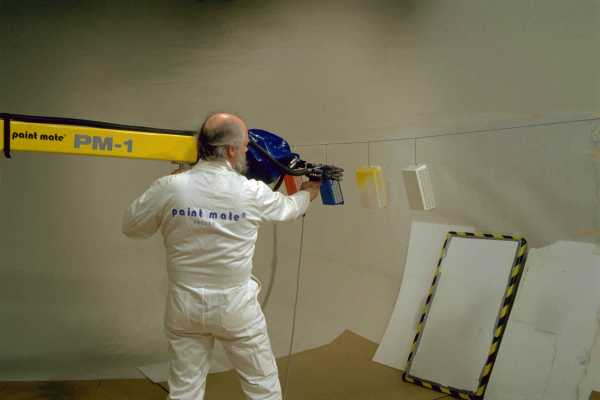
Programmeringsmetoder
| Lead Through | This method means that the operator (usually the painter) leads the robot in suited path. After that the program may be played back by the robot as many times as you wish. This is a fast and easy method. |
| Point To Point (Teach) | Means that you lead the robot and define points in the space around the object. After that you define what speed the robot shall move in between the points. This is a fast and easy method. |
| Point To Point (PTP) | This method means that the robot is driven to points around the object with a teach pendant or a joy stick (the robot is powered). This method is suitable for big objects and big production series. The method takes a longer time to program and usually has to be edited, but gives a low colour waste. |
| Off Line | Means that a part of the programming work is maintained using a PC (personal Computer) or direct on the control system. The programming is done without interrupting the production. About 30 % of the programming work may be done this way. The rest has to be edited on the object or linked with the other methods above. |
PM-1 offers all the above programming methods to be mixed on the same object which means fast and efficient programming. The program may than be edited to further reduce the colour waste and decrease the cycle time.
All the robot functions are easy to learn which means that production can start fast after installation. The robot may be synchronised with moving objects hanging on for instance a conveyor.
The objects may be identified automatically or manually.
The operator communicate with the robot via a teach pendant that shows all the necessary information in a text window. The control system may communicate with other equipment in the production and a PC may be used to follow up the production.